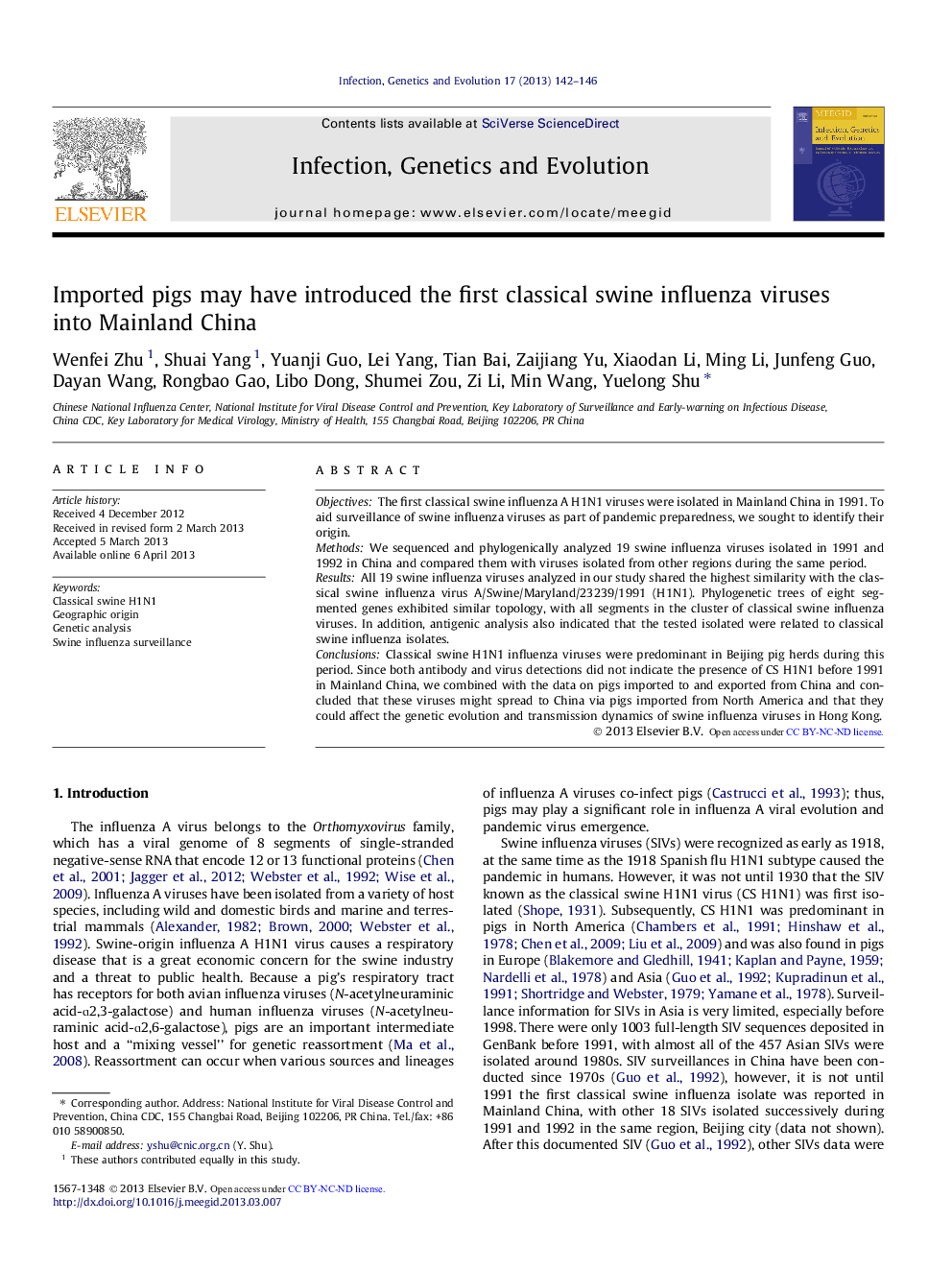| Article ID | Journal | Published Year | Pages | File Type |
|---|---|---|---|---|
| 5910383 | Infection, Genetics and Evolution | 2013 | 5 Pages |
â¢Nineteen SIVs in 1991-1992 were phylogenically and antigenically analyzed.â¢The tested isolates were related to classical swine influenza viruses.â¢The first swine isolate's geographic origin in China was identified.
ObjectivesThe first classical swine influenza A H1N1 viruses were isolated in Mainland China in 1991. To aid surveillance of swine influenza viruses as part of pandemic preparedness, we sought to identify their origin.MethodsWe sequenced and phylogenically analyzed 19 swine influenza viruses isolated in 1991 and 1992 in China and compared them with viruses isolated from other regions during the same period.ResultsAll 19 swine influenza viruses analyzed in our study shared the highest similarity with the classical swine influenza virus A/Swine/Maryland/23239/1991 (H1N1). Phylogenetic trees of eight segmented genes exhibited similar topology, with all segments in the cluster of classical swine influenza viruses. In addition, antigenic analysis also indicated that the tested isolated were related to classical swine influenza isolates.ConclusionsClassical swine H1N1 influenza viruses were predominant in Beijing pig herds during this period. Since both antibody and virus detections did not indicate the presence of CS H1N1 before 1991 in Mainland China, we combined with the data on pigs imported to and exported from China and concluded that these viruses might spread to China via pigs imported from North America and that they could affect the genetic evolution and transmission dynamics of swine influenza viruses in Hong Kong.
